Everyone may need to sew a patch at some point in time. It is necessary mainly in cases where the front side of the fabric is damaged, because the seam can spoil the appearance. A patch made will help to return the presentable appearance, which, thanks to a large variety of patches, can be easily sewn.
Types of patches
Today there are many types of patches. Before you start repairing clothes, you need to decide which one will be used.
Depending on their properties, patches are divided into several groups:
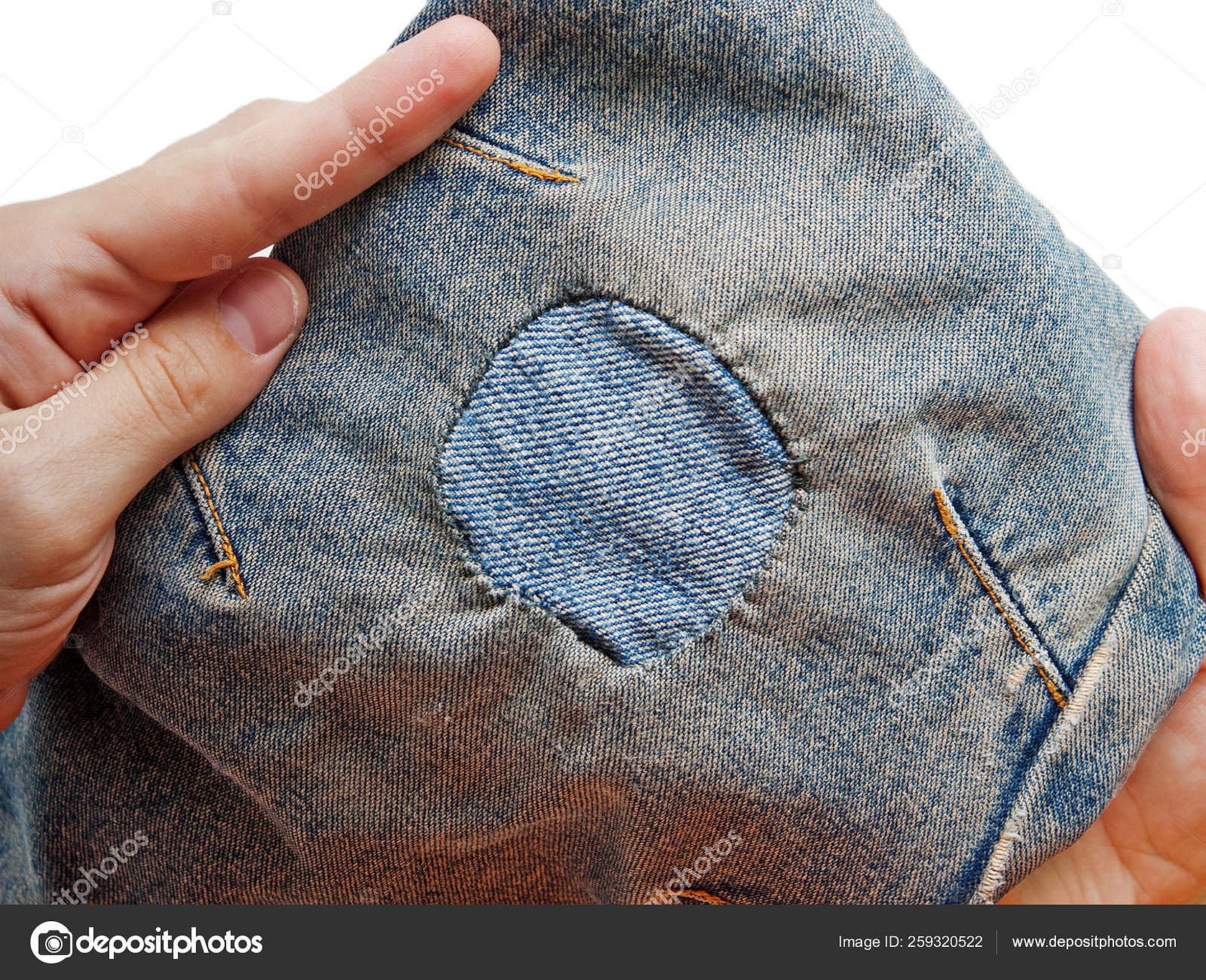
- Set-in ones are decorative items that can be of absolutely any shape. They are sewn onto the front part and help to combat damage to fabrics, and are also used as decorative elements. With the help of these patches, you can restore the area between the legs.
- Double-sided - these patches are presented as two identical-shaped parts that only differ in size. In order for the patches to perform a decorative function, they are sewn on with hand-sewn blind stitches. They are used to restore items with worn knees and elbows.
- Patchwork patches are the simplest type of patch. However, they are not very reliable. They are used to repair damage to any item of clothing.
- Internal - sewn along the contour of the material from the inside. Used in cases where the fabric begins to tear from the inside.
- Functional - used to strengthen parts of clothing so that it looks aesthetically pleasing. Such patches can even be used to accentuate new clothing. These types are used on elbows and knees, as reinforcement of the material.
- Decorative - these patches are made from bright fabrics and are found on any item of clothing to attract attention.
- Artistic - these are logos, flowers or animals that play not only a functional but also a decorative role. They are sewn onto various parts of clothing.
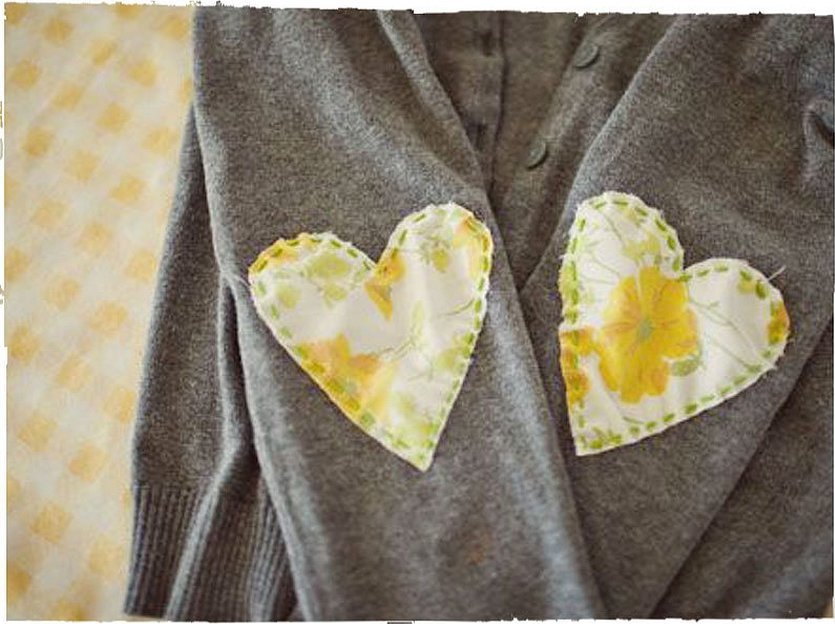
In addition, before sewing on a patch by hand, you need to decide on the material to be used.
Please note! Any patch should be several centimeters larger than the hole.
Native fabric
The easiest way is to make patches from fabric that matches the texture and color. In order not to buy fabric, you can use a fragment. It can be cut out from hidden places, for example, under pockets. And other fabrics are sewn in place of the cut fragment.
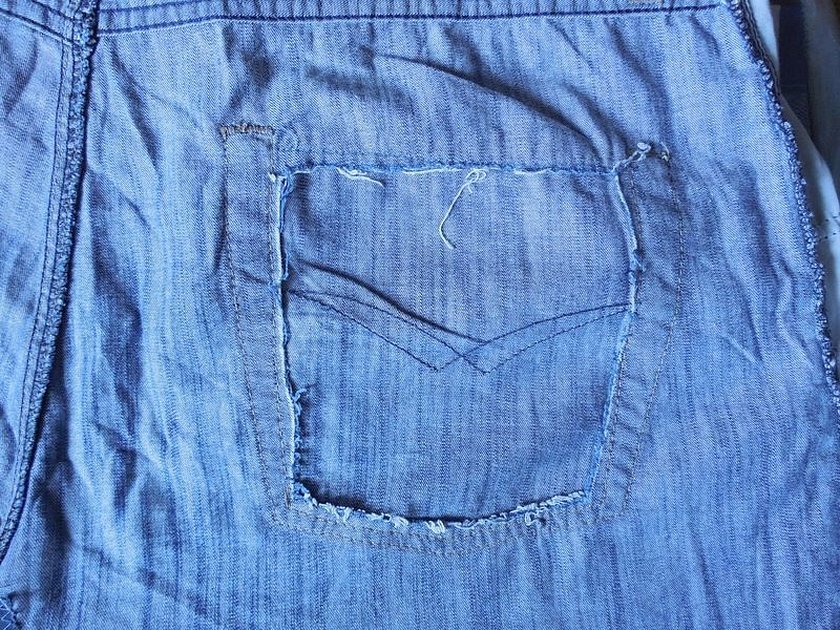
Adhesive fabric
When working with scuffs, this is the type of fabric that is mainly used. Before sewing on a patch made of adhesive fabric, steam the damaged area and then glue the web with an iron. Once all the steps are completed, it is recommended to sew it on the machine with a zigzag stitch. The threads should match the color of the product.

Lace
An original method for eliminating holes in a product and decorating it. Such patches look especially impressive on denim products. They are sewn on in the same way as all the others. To create them, you can use guipure of any color, but the most effective, for example, on black jeans looks white lace, and, conversely, on light jeans it is best to sew black lace.
Thermal patches
This method is considered the most basic. Iron-on patches are textile pictures on an adhesive base. They can be made in the form of flowers, logos or mice, as well as other animals. It is very easy to glue them, especially on trousers or pants. To do this, you need to apply the patch from the outside to hide the torn area and go over it with a hot iron.
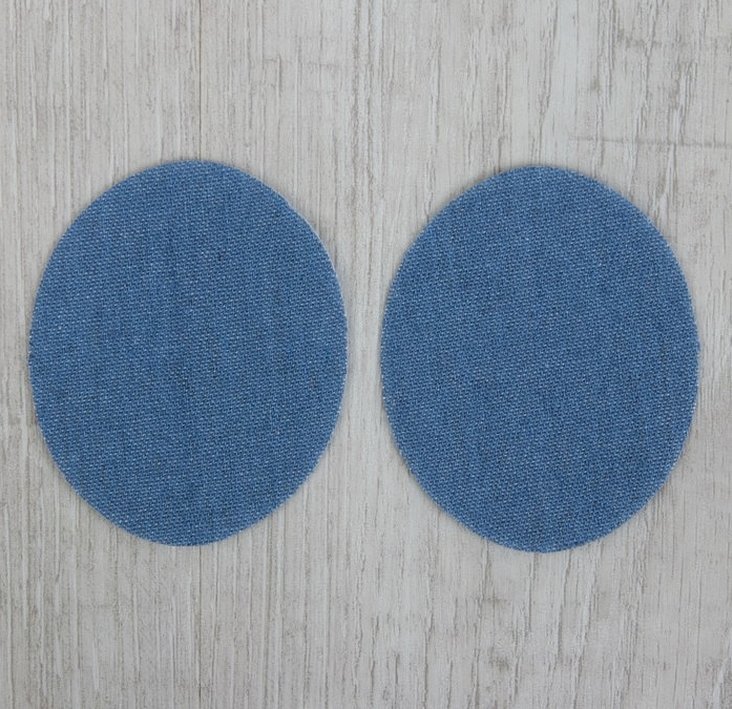
Patch sewing technology
It is very easy to sew a patch. To do this, you first need to prepare the necessary materials and tools. You will definitely need scissors, threads, pins and the patches themselves.
Please note! Before you begin repairing or decorating a piece, you need to make sure it is clean and dry. The patch should also be clean.
Manually
There are several ways to sew a patch on manually. The most suitable method is selected in each specific case. You can sew it on with a blind stitch. It will be completely invisible. The edges of the tear need to be folded inward, the patch secured with pins and hemmed.
If you need to make a bright accent on a piece of clothing, then you should give preference to bright threads.
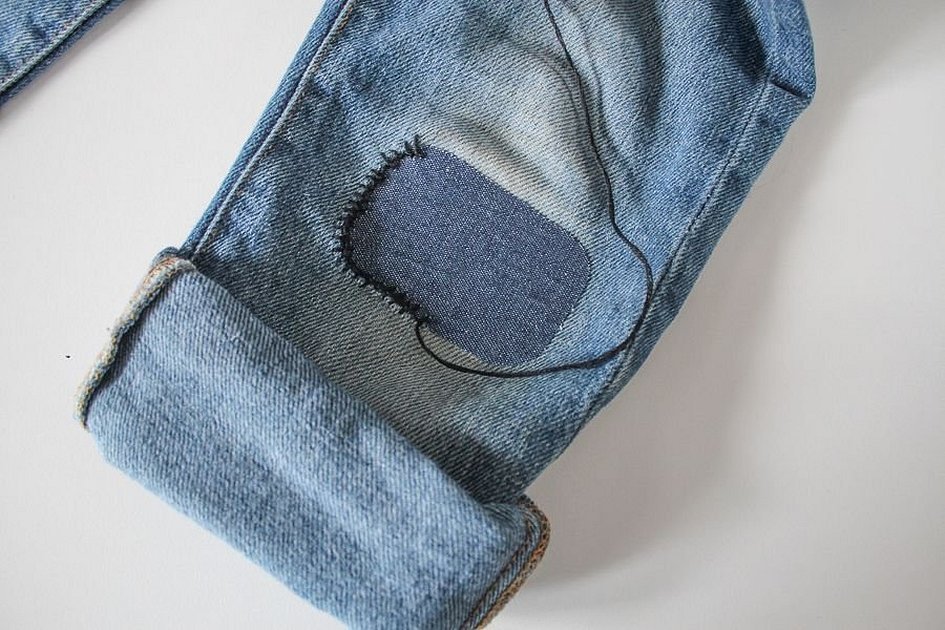
On a sewing machine
You can sew the patch on with a sewing machine. In this case, you will get a neat and beautiful seam. Before sewing on the patch, it must be cut out of a suitable material. Turn the product inside out, put the patch on, secure it with basting stitches, which are done by hand. Then you will need to turn the product inside out and stitch it on the machine, then iron it. The final step will be to remove the basting stitches.
How to darn with a blind stitch
A blind stitch is used when it is necessary to sew up a hole in a product so that it becomes invisible. To do everything correctly, you should follow the recommendations:
- thread a needle and make a small knot;
- turn the product inside out;
- pass the needle through the hole inside out so that the knot remains there;
- sew up the hole;
- finish the seam.
After the hole is sewn up, you need to pull the thread until it goes into the seam and becomes completely invisible from the front side.
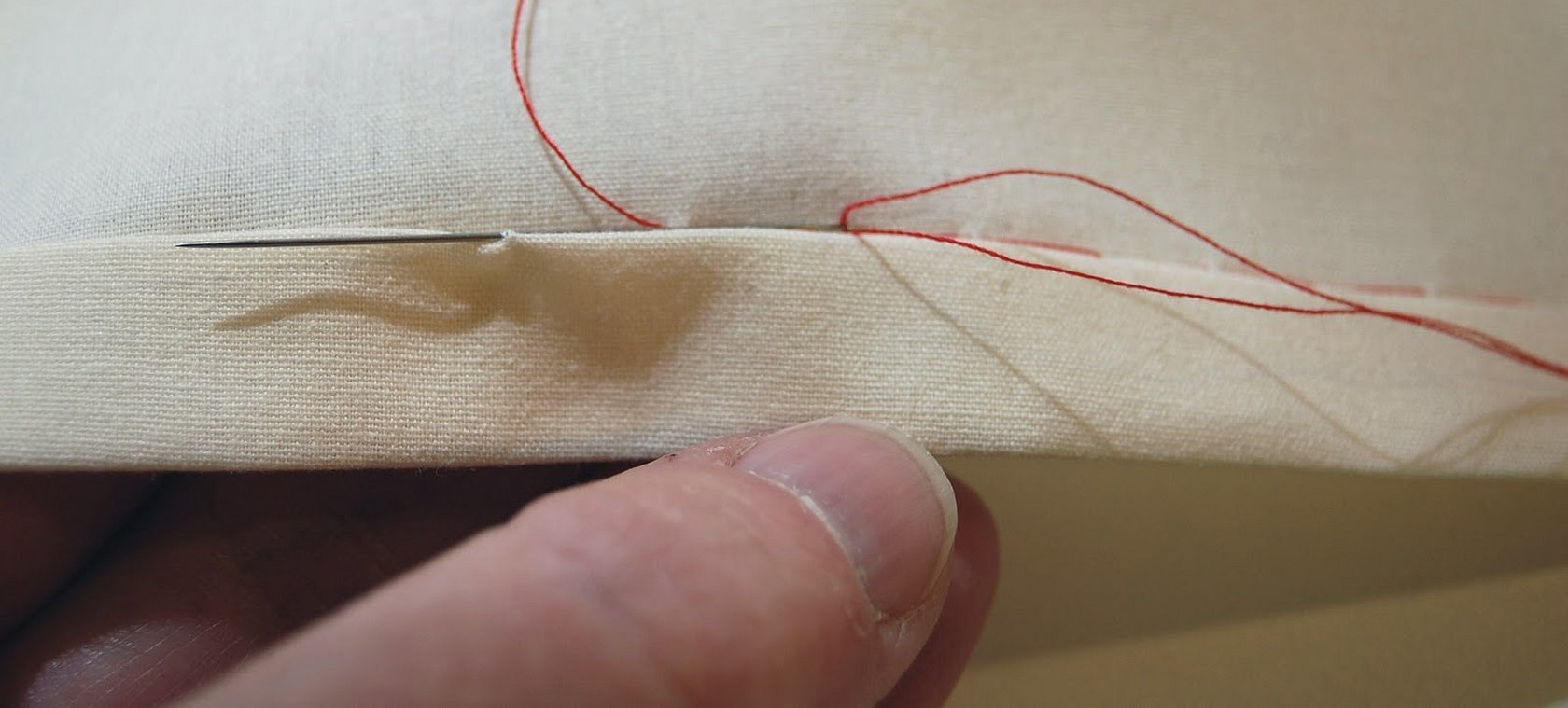
Neat patch on the elbows
You can restore damaged areas or old items with a neat patch. This way, the product will acquire an original appearance.
You can sew a neat patch on your elbows in the following way:
- you need to prepare everything you need;
- mark the places where the patch will be applied on the product;
- cut out the patches and sew them on.
Important! Once all work is completed, the product must be steamed using an iron.
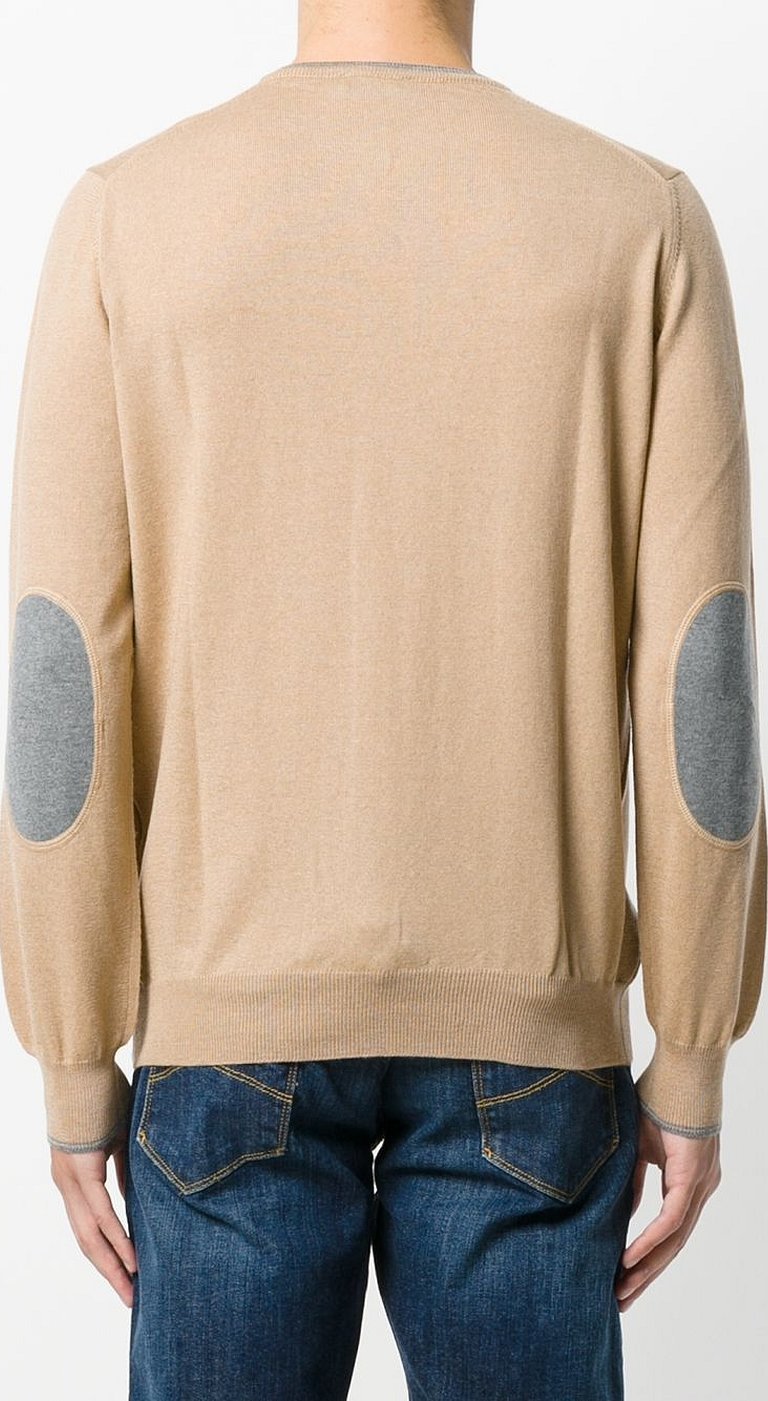
Patch on the knee
It often happens that the pants are still good, but there is a scuff or a hole on the knee. Thanks to patches, it became possible to hide such defects and give the product a “fresh” appearance.
To put a patch on the knee, you need to overcast the patch along the entire edge with single-color threads. Then attach it to the damaged area. First, it should be sewn to the product with an overcast stitch, and then attached to the fabric by hand or with a sewing machine.
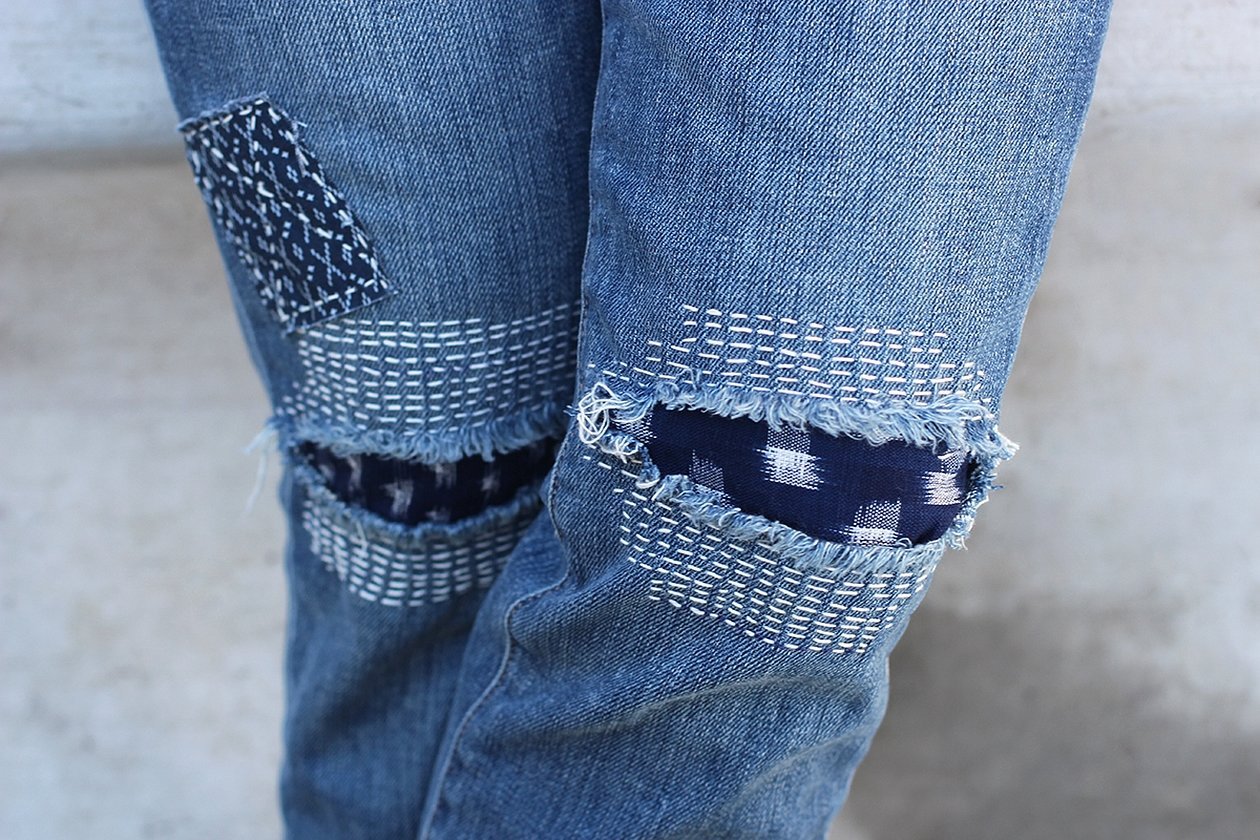
Patch on jeans between the legs
Jeans are a very common material. Dresses, shirts, and trousers are now made from them. But most often, problems arise with trousers. They mainly wear out between the legs due to systematic friction. The situation can be corrected by sewing on a patch. To do this, you need to do the following:
- disassemble the connecting seams;
- iron the material;
- remove unnecessary lines;
- Use chalk to mark the lines along which the fabric will be cut;
- cut out patches;
- sew them together with a connecting stitch.
Important! All actions must be performed in mirror image. In this case, the product will look aesthetically pleasing.
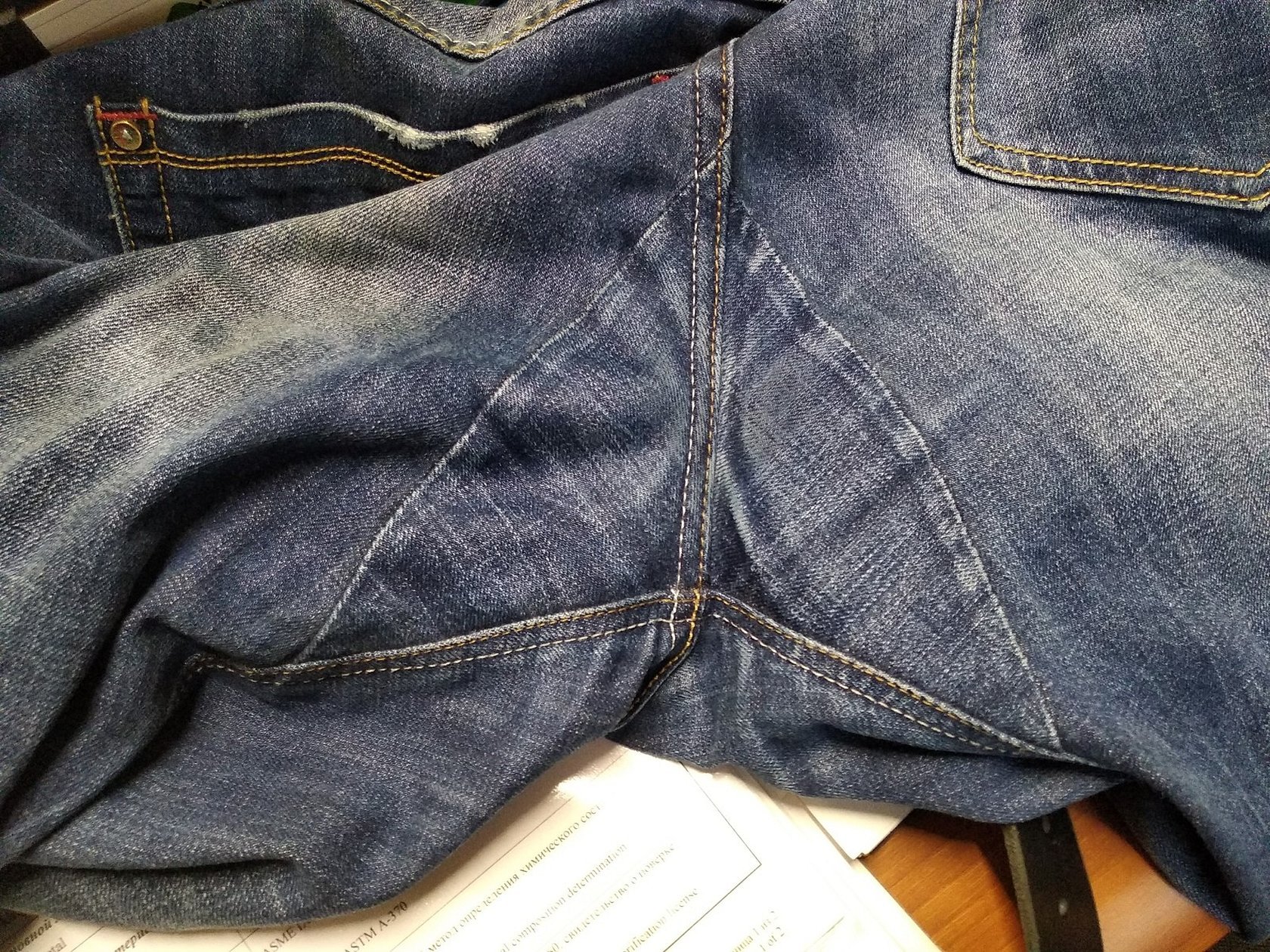
When scuffs or holes appear, you can give things a second life with a patch. They are easy to choose for any material and product. The main thing is that they match and look beautiful. There are several ways to sew on patches, but regardless of this, the process will not cause difficulties even for those who have no experience in sewing.




